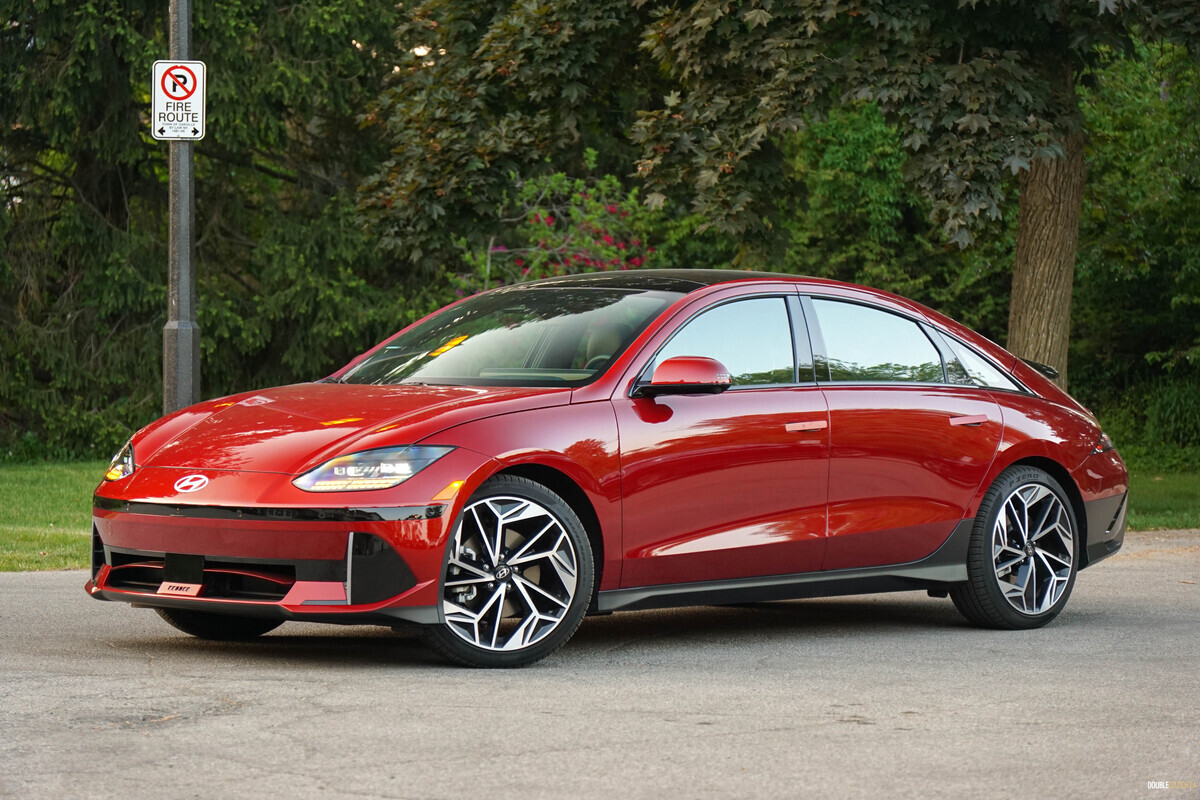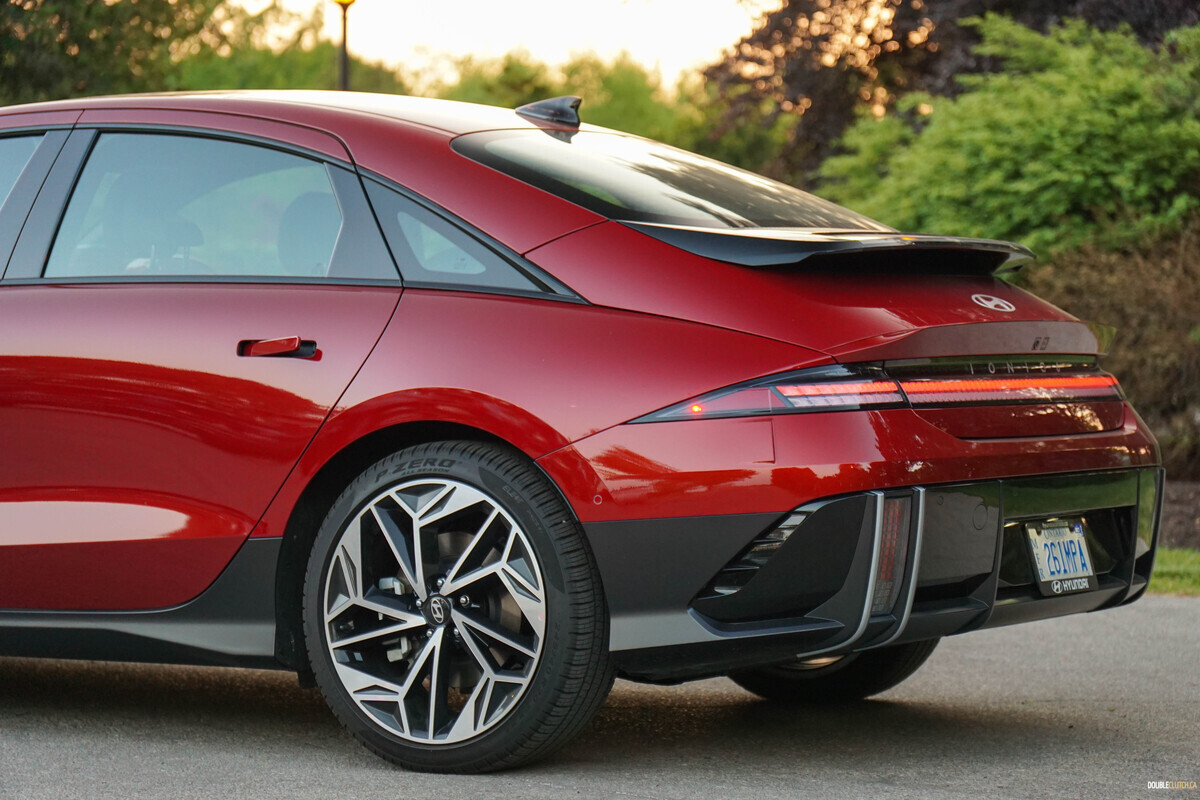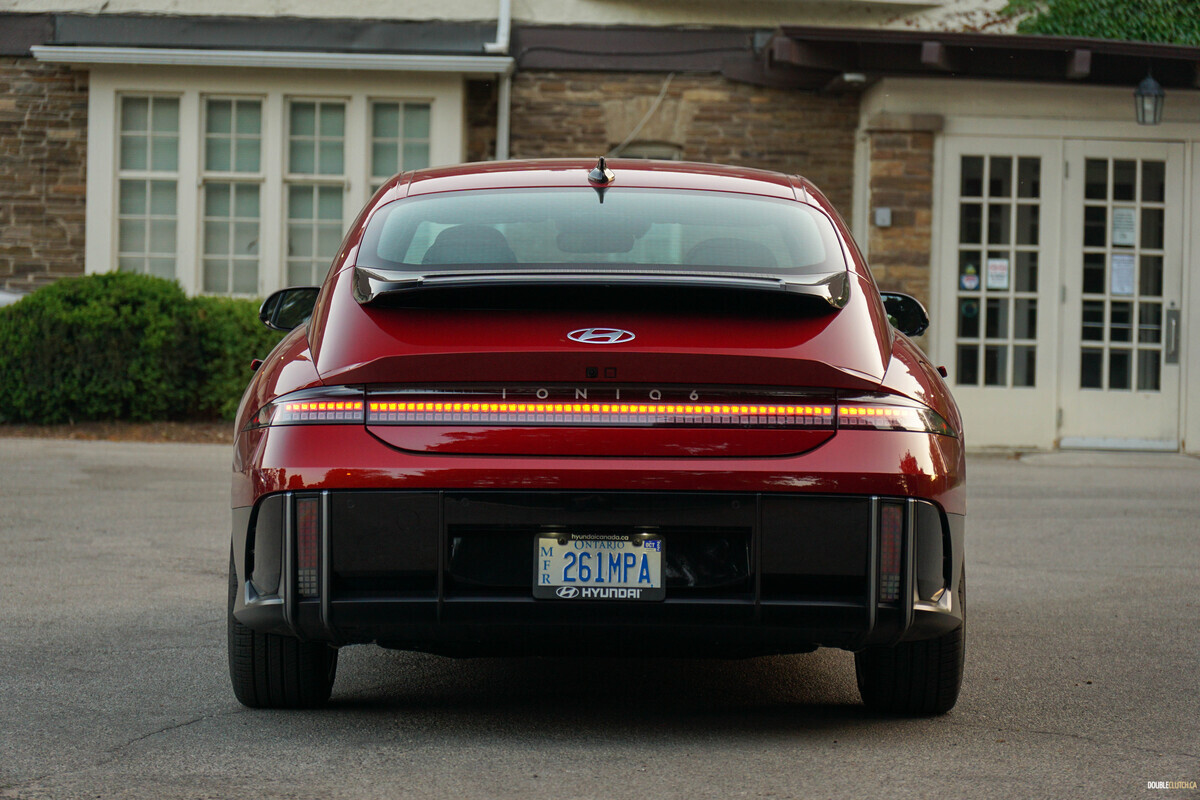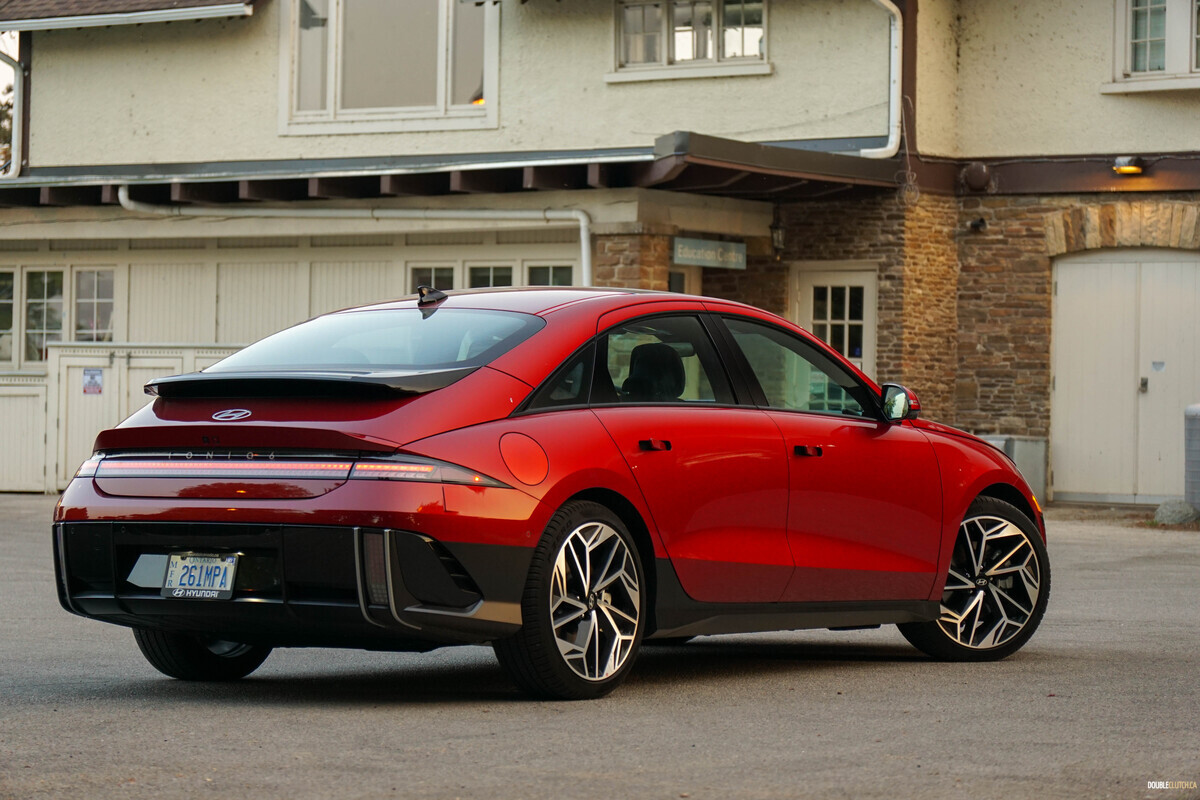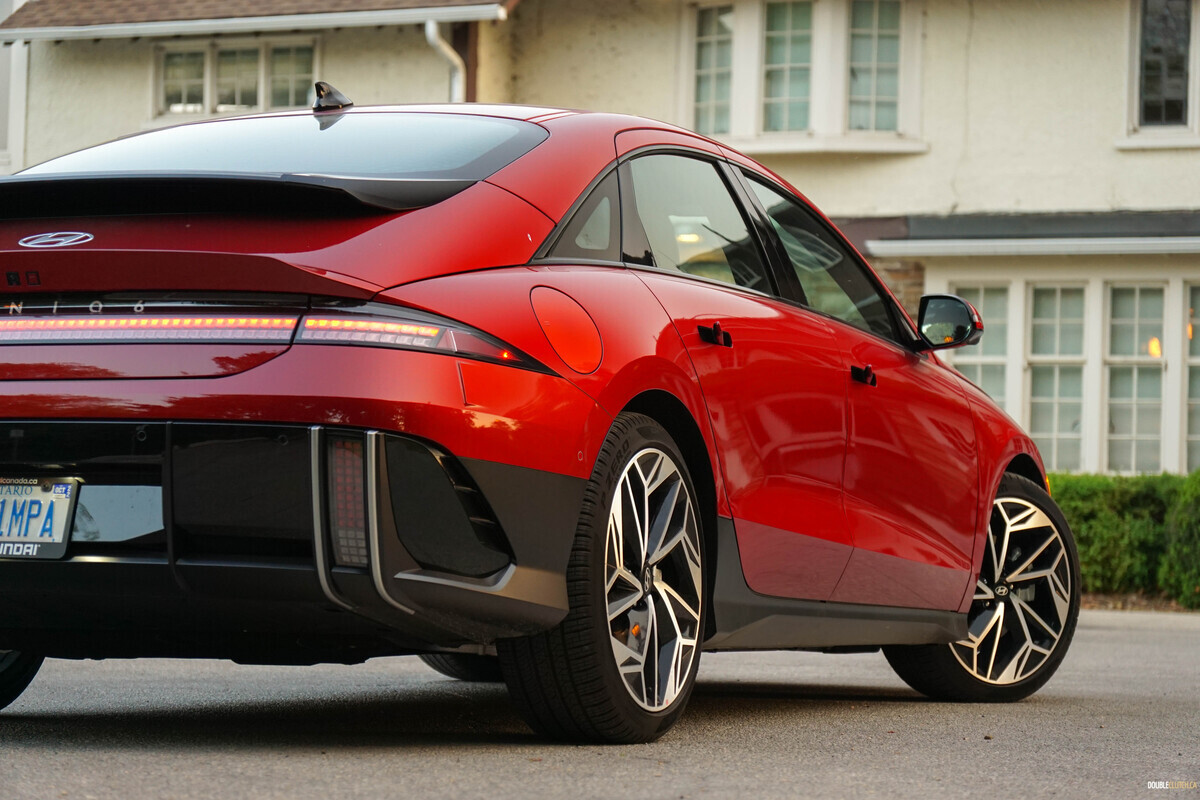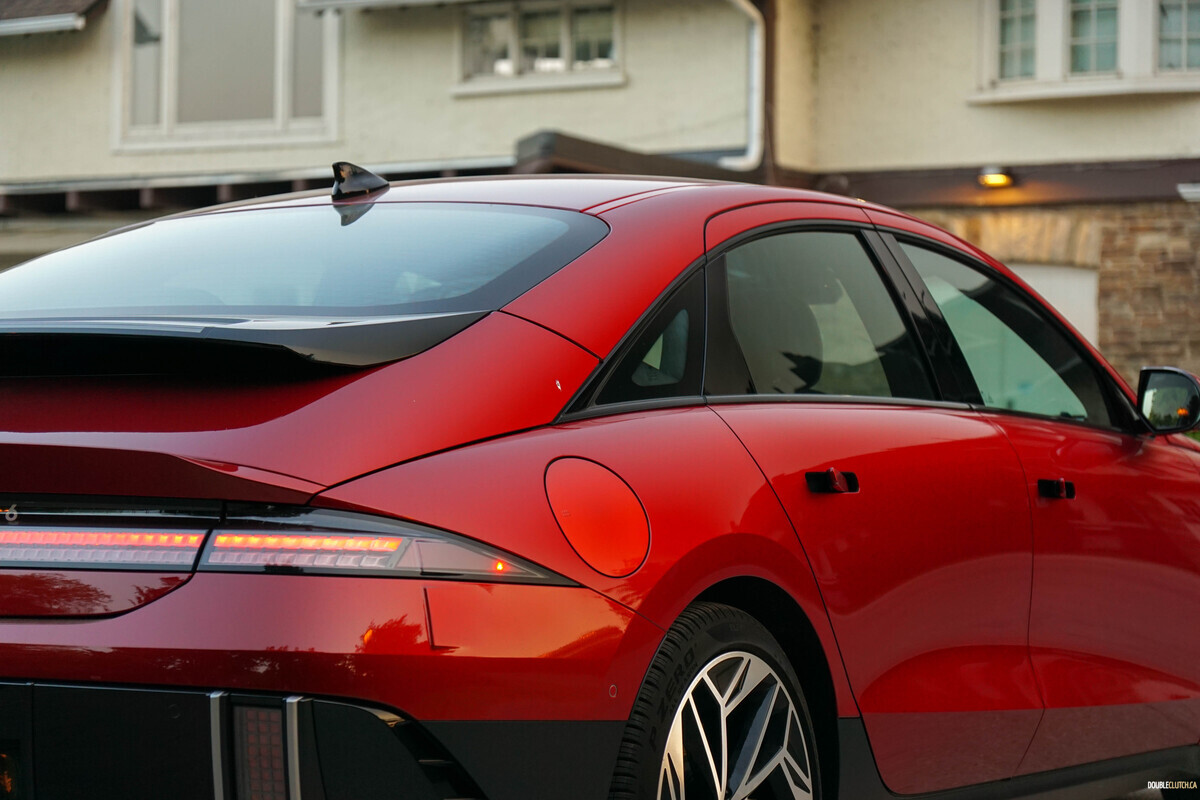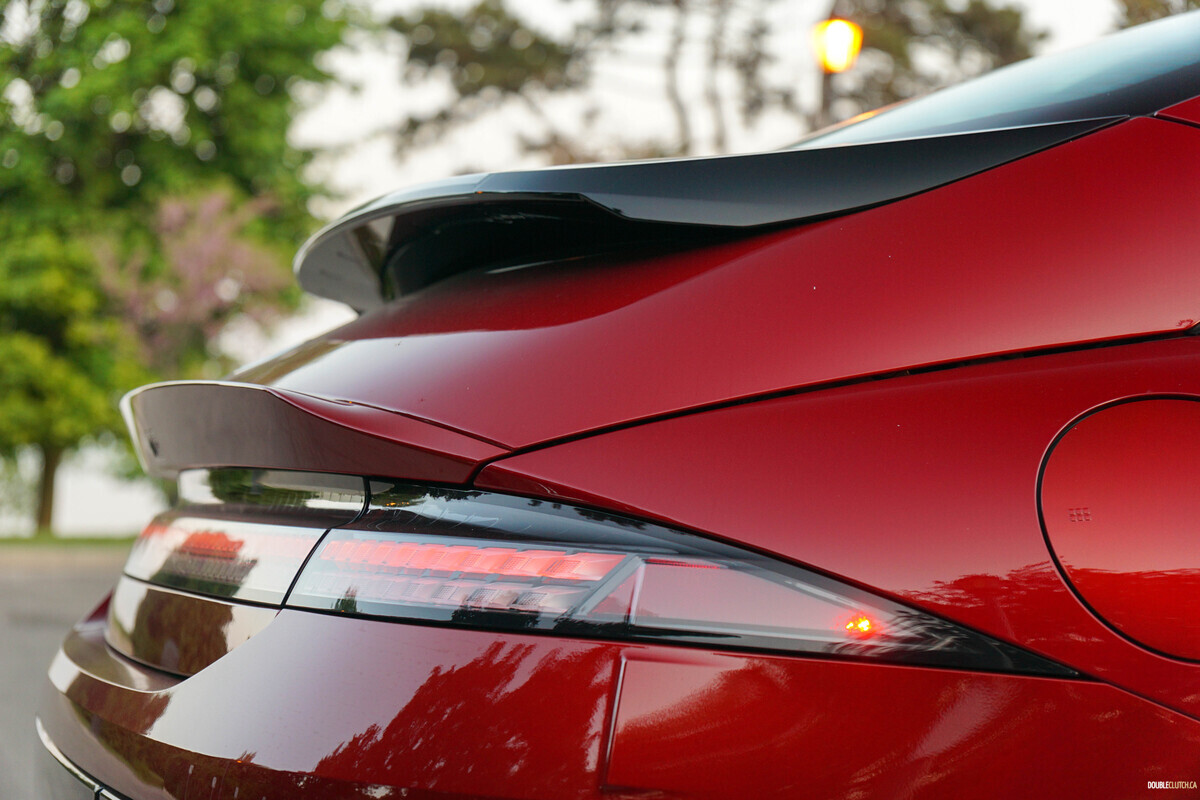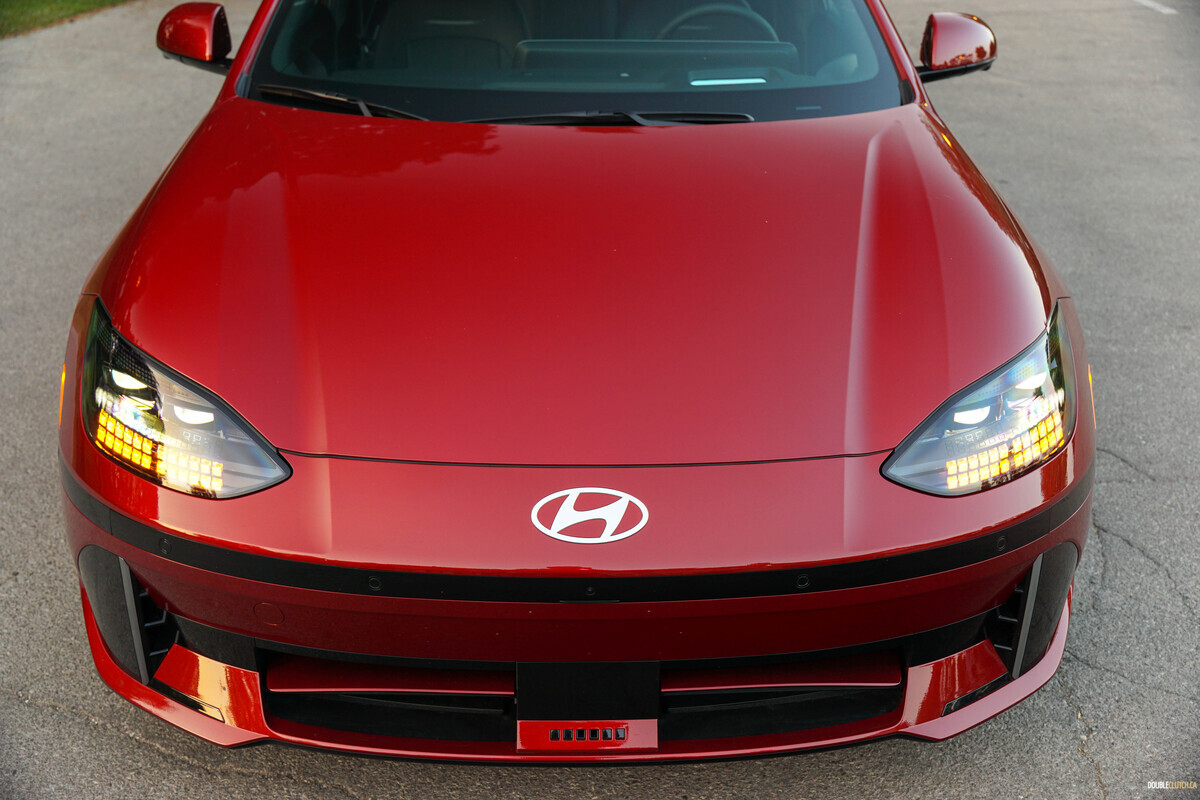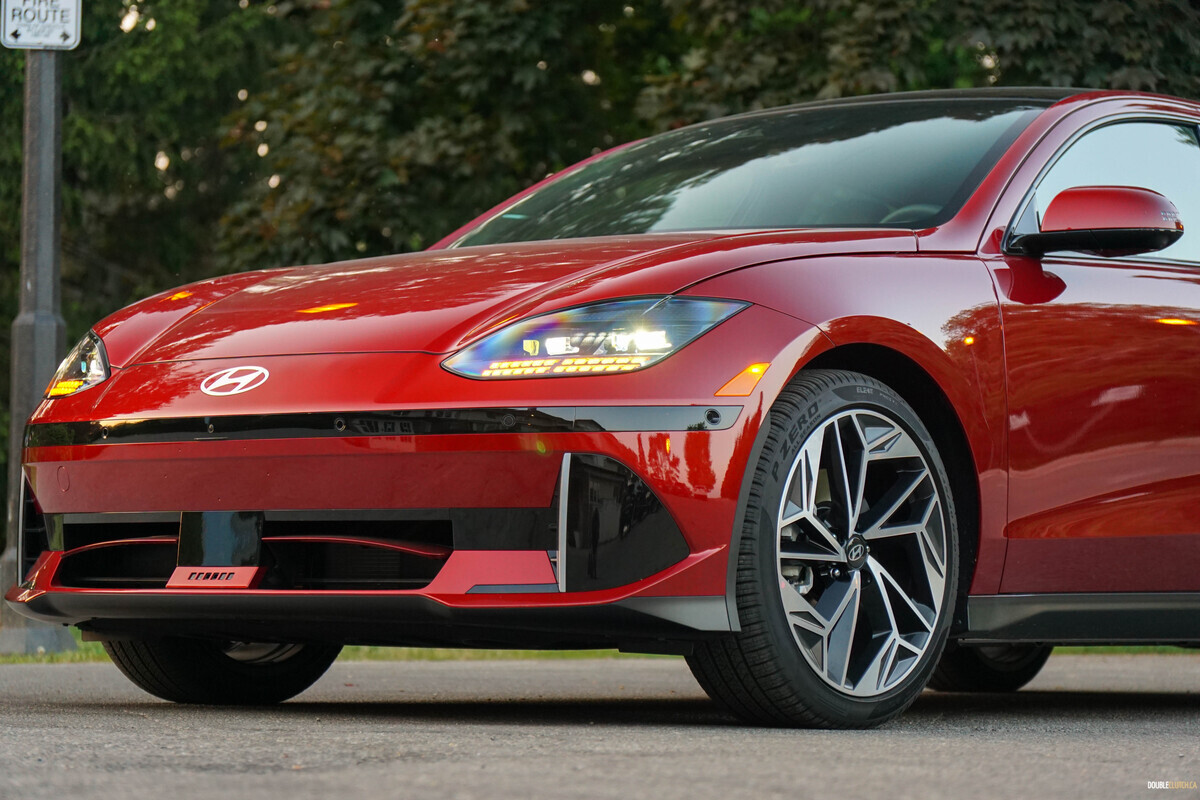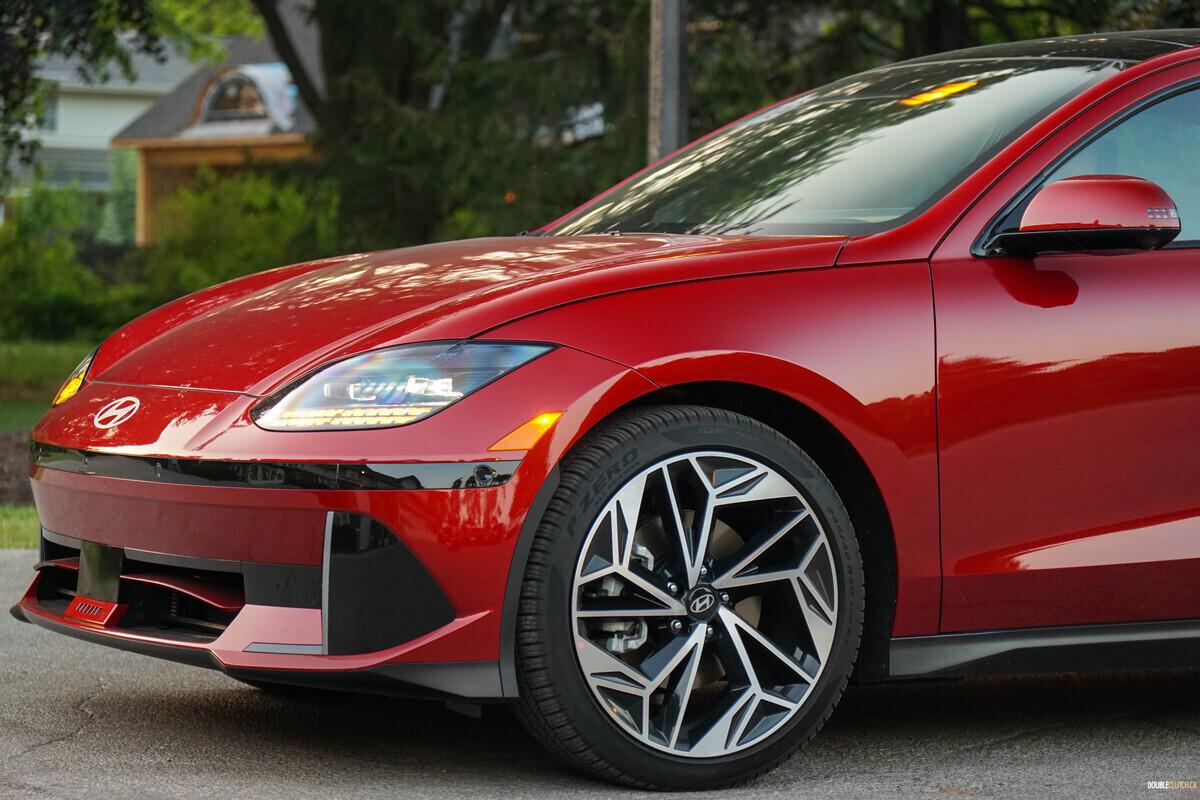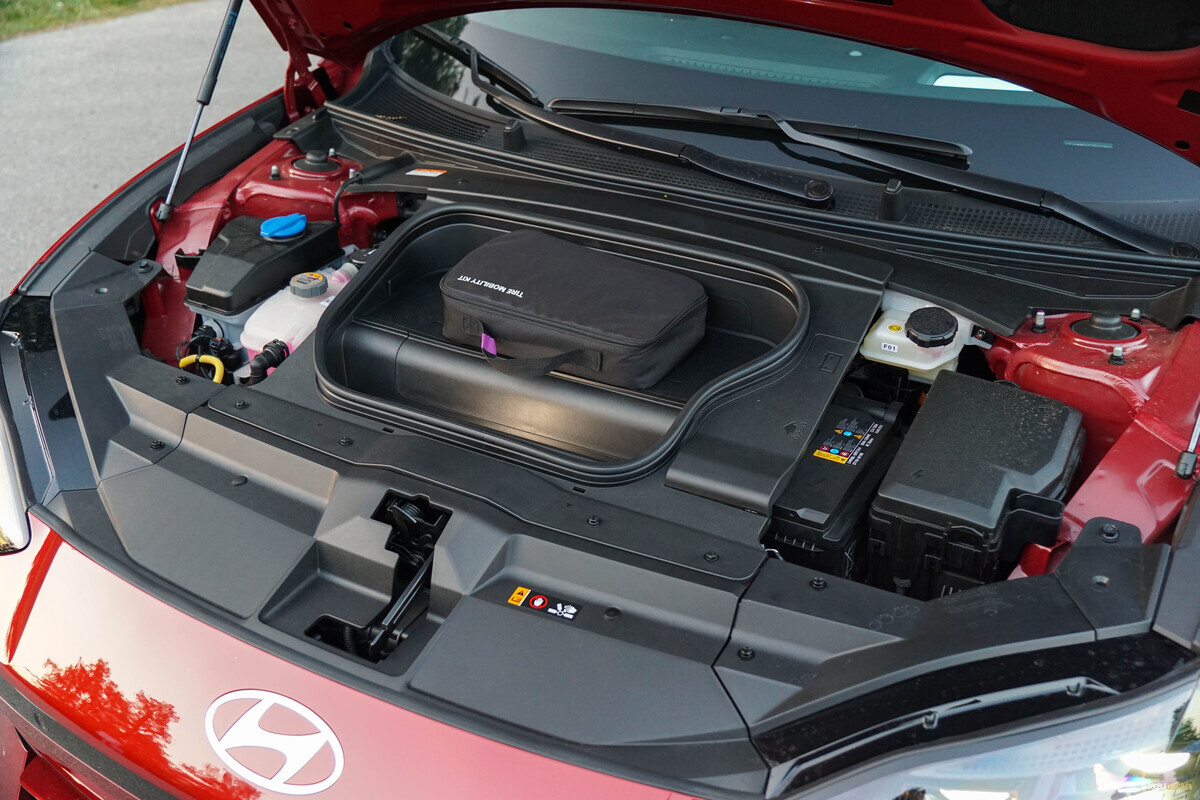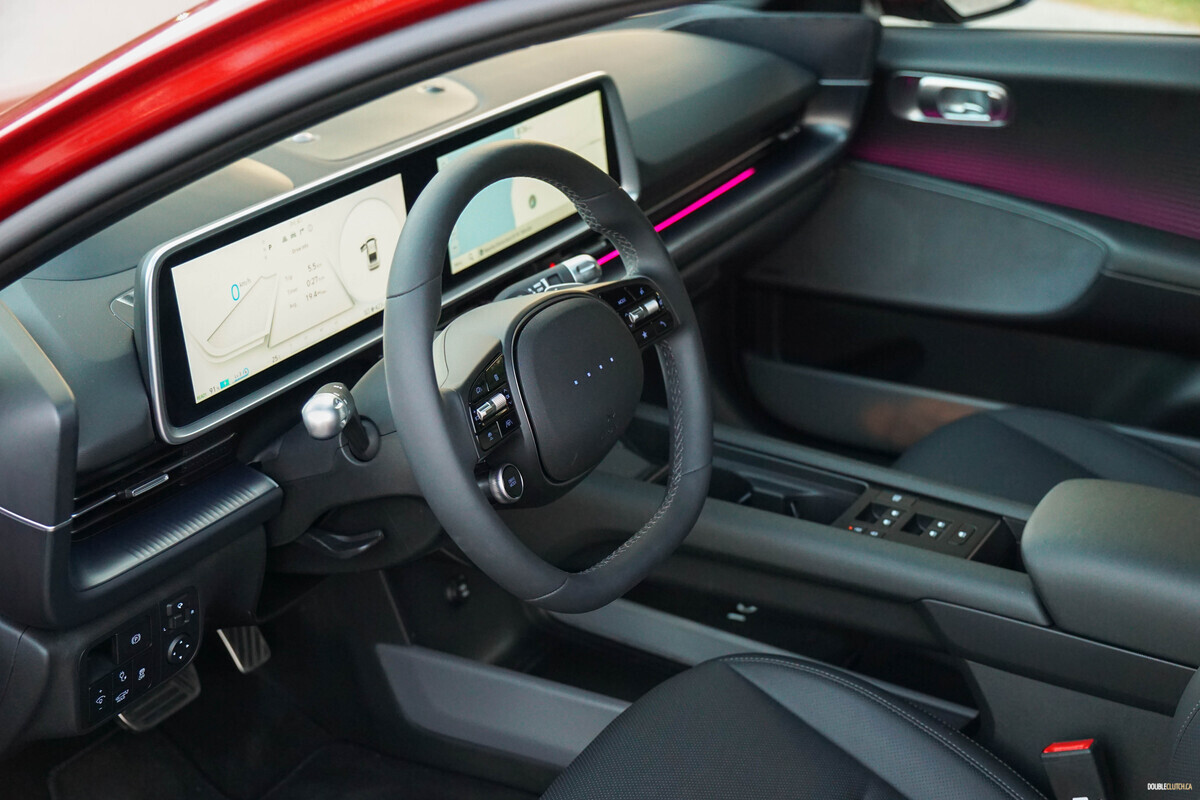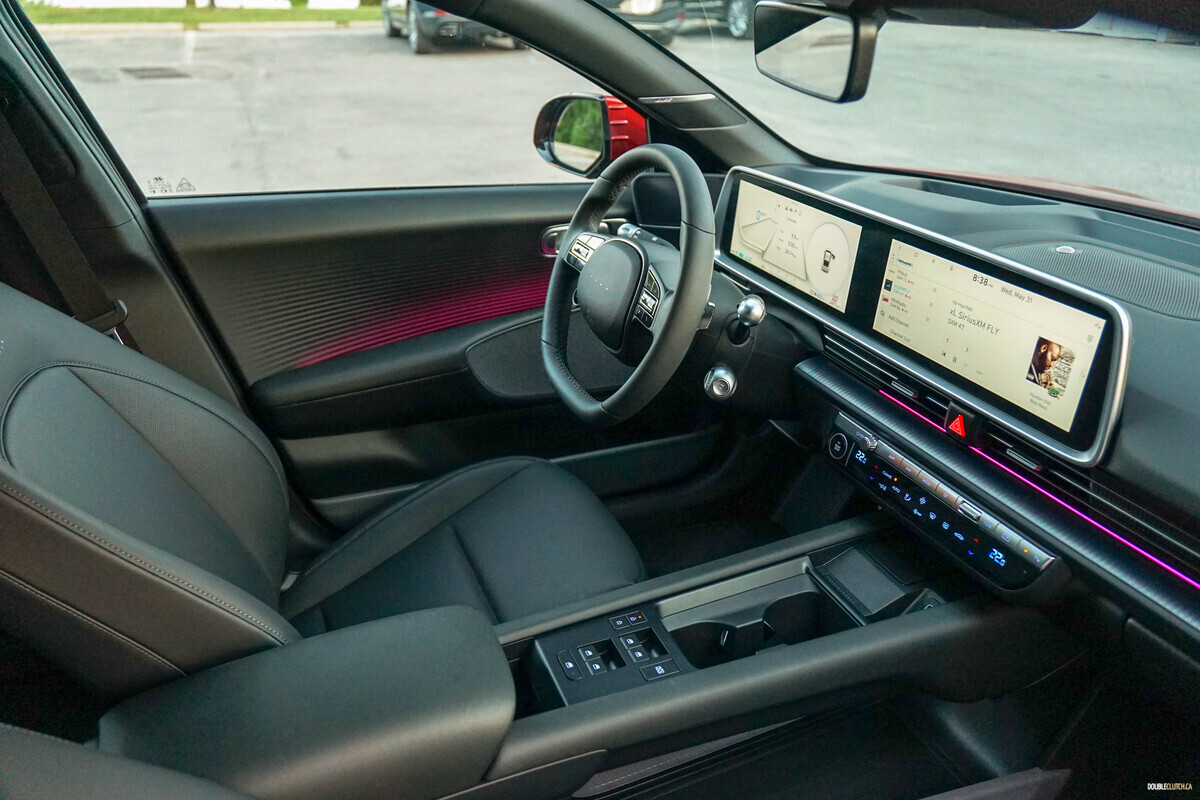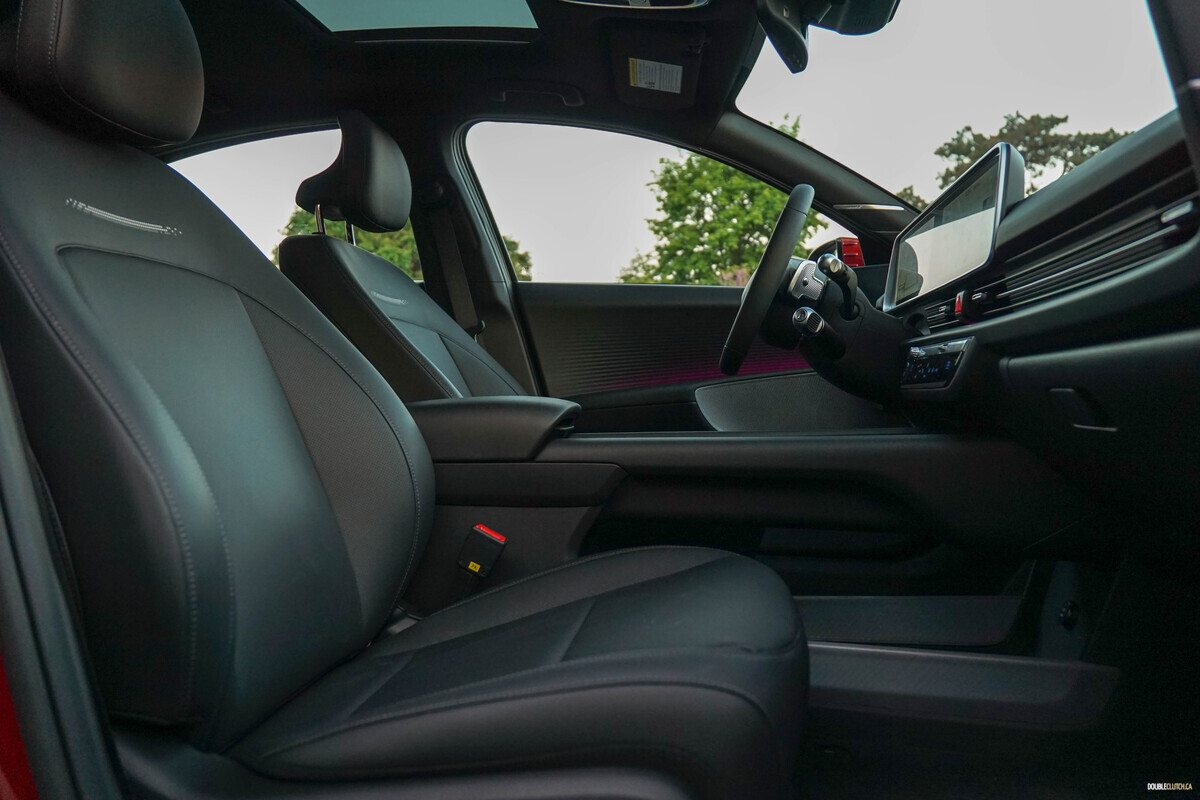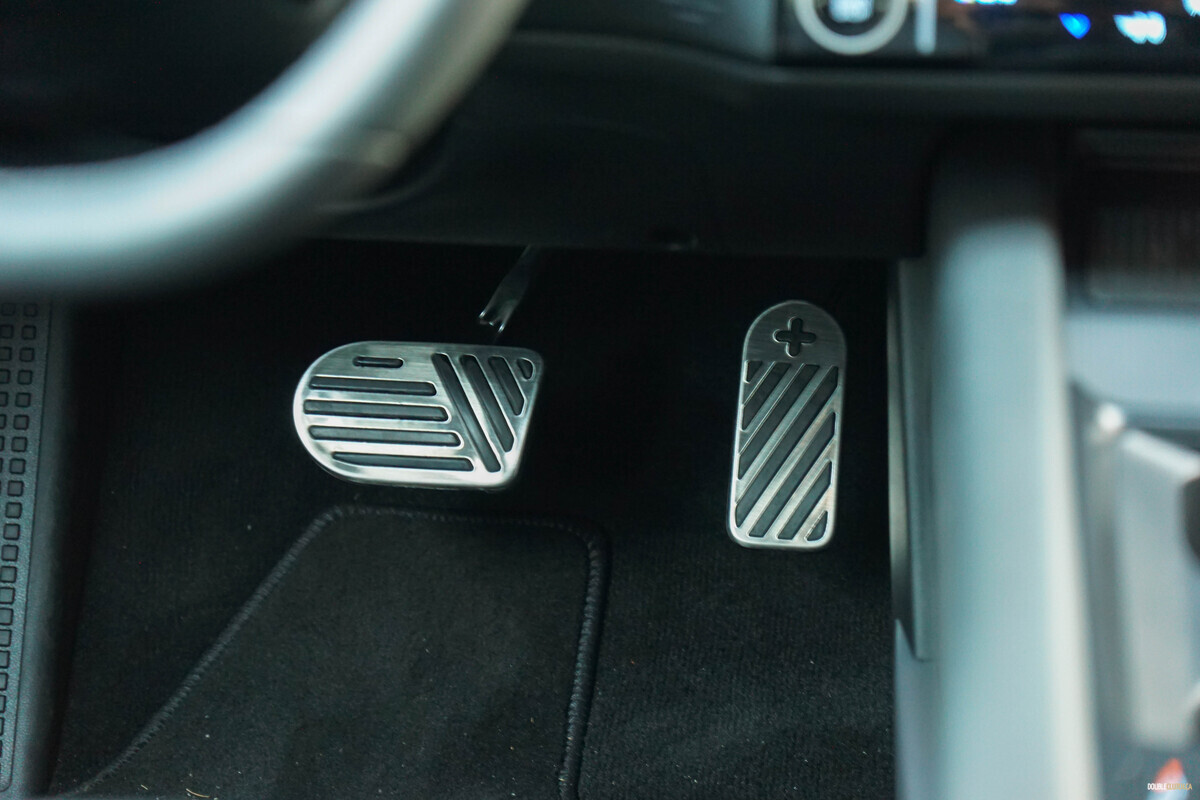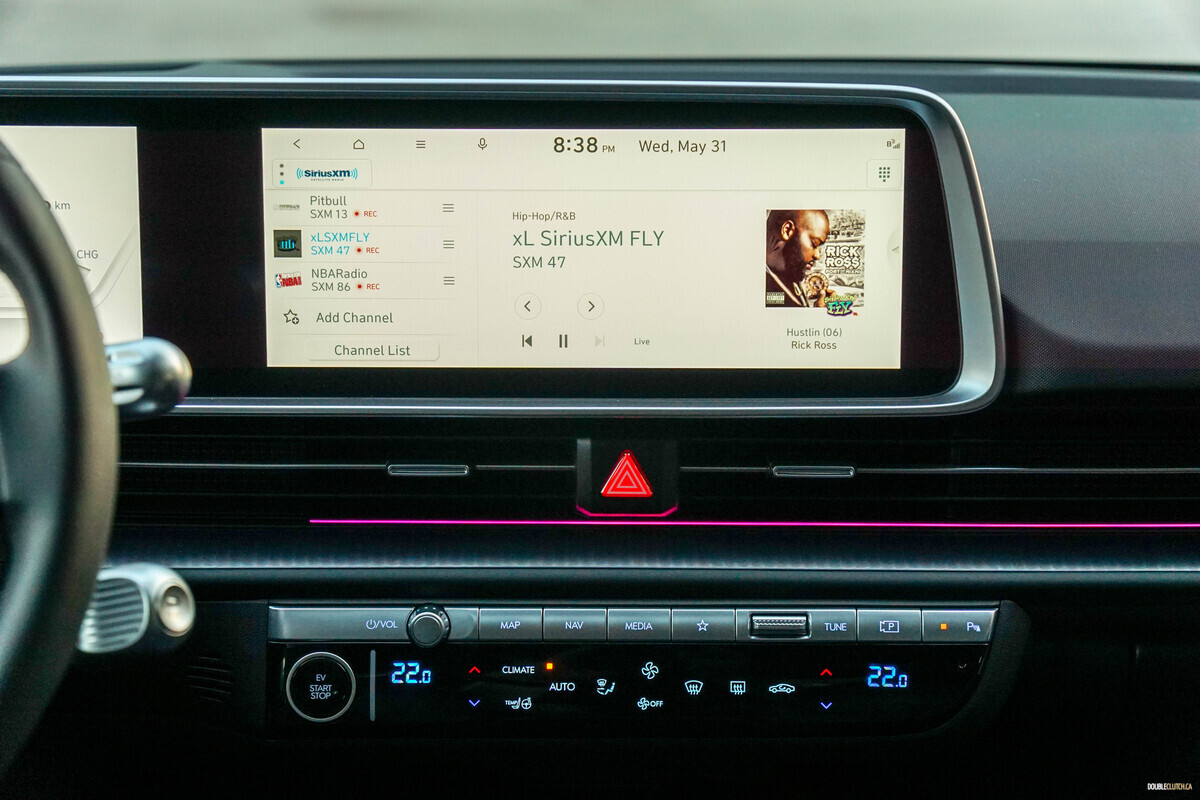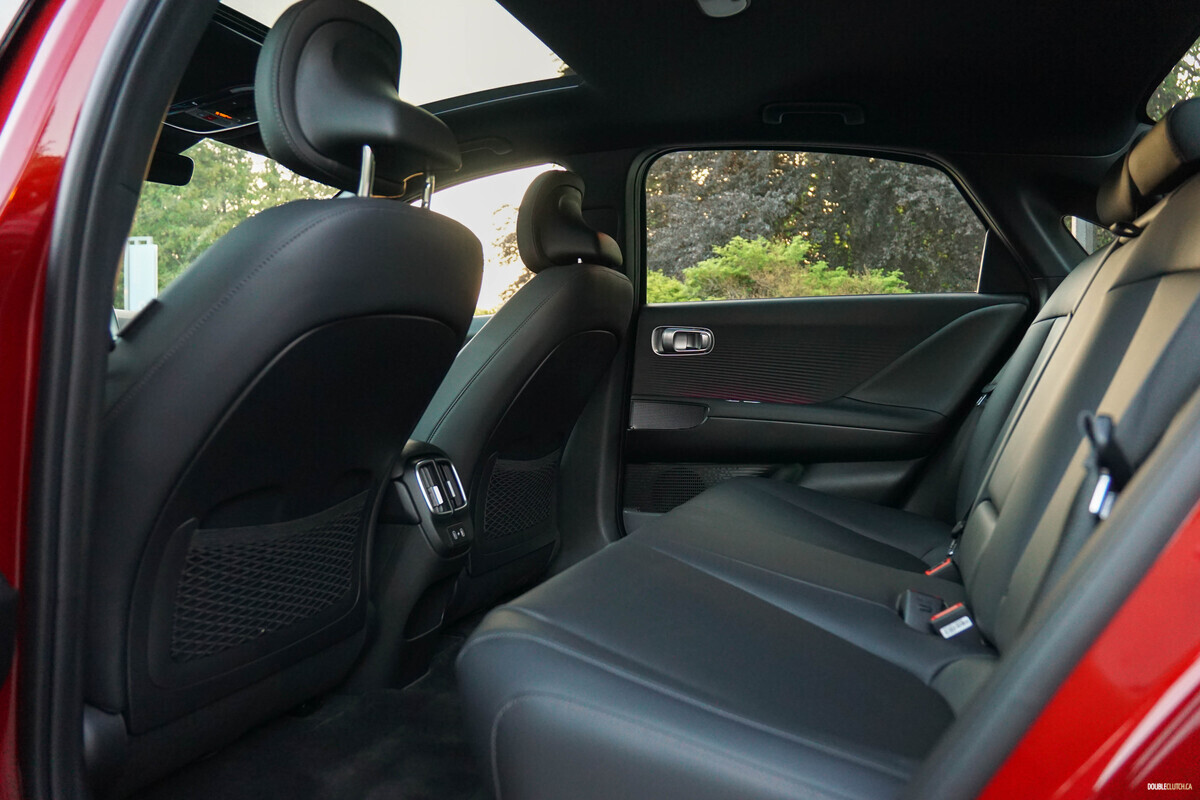Last year, Hyundai took home not one, but three World Car awards thanks to the Ioniq 5. They must be doing something right, because Hyundai pulled off the same podium sweep earlier this year with the Ioniq 6, taking home the World Electric Vehicle, World Car Design, and the overall World Car of the Year once again. Winning just one award would make any automaker quite happy, but for Hyundai to win all three, and for the second year in a row, is quite rare. So, we set out with the 2023 Hyundai Ioniq 6 this week to see if lives up to the hype.
While the Ioniq 5 goes with more of a retro-modern hatchback look, Hyundai decided that its Ioniq 6 would come in the form of a sedan. An SUV would have been an easy follow up, but a tried-and-true sedan would allow for a more engaging ride. Of course, despite the look it’s not a sport sedan — at least, not until the N division works their magic.
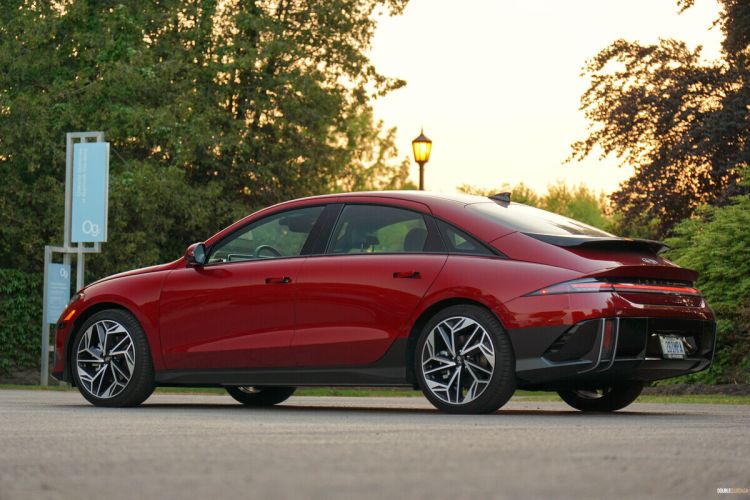
Right off the bat, the exterior styling of the Ioniq 6 has been surprisingly controversial. You will either love or hate the swooping teardrop shape, but it was done to provide one of the lowest drag coefficient figures — 0.21 — currently on the market. With such a low figure, this results in improved performance, reduced wind noise, better driving stability, and enhanced range. The downward swoop of the roofline may look like it will significantly impact headroom, but I’m over six feet tall and had zero issues with my head touching the headliner.
I was not a fan of the exterior design at first, but it grew on me and I appreciate that Hyundai was thinking out-of-the-box to make something different and not be mistaken for a Tesla. Looking only at the tight panel spacing and overall build quality, and you already have a huge advantage over a Model 3. The Ioniq 6 also adopts the 5’s pixel theme; look around and you’ll still see blocks, despite the much swoopier styling. Where some controversy arises is the rear end; some say it resembles a Porsche and from certain angles, I do see it, but most Porsche aficionados will deny any resemblance with a lowly Hyundai.
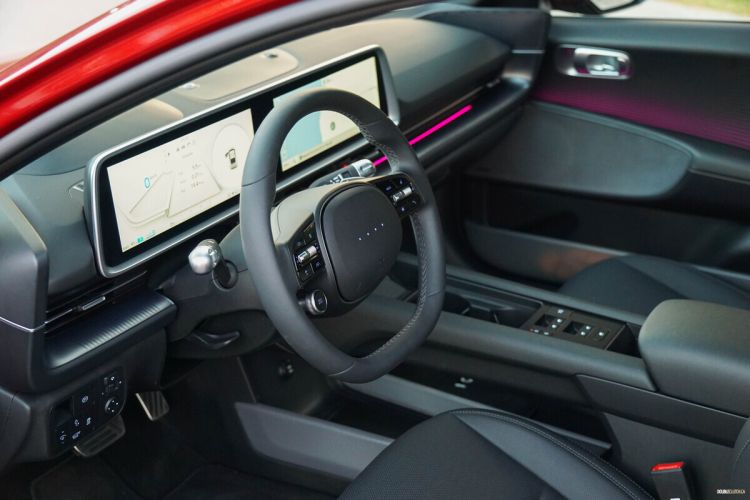
Inside, you will also find pixels placed in areas such as the LEDs on the steering wheel, wireless phone charger and dash. The Ioniq 6’s interior retains that clean and sleek design from the Ioniq 5. Thanks to the shared E-GMP platform between the two, the 6 also the flat floor for rear-seat passengers. Once you sit in a vehicle without a transmission hump running through the interior, it opens your eyes to the amount of usable space for three adults in the second row seats. That being said, if cargo space is a priority, the Ioniq 5 is a smarter choice on account of its rear hatch, versus the 6’s traditional trunk.
Unlike a Model 3, the Ioniq 6 does not wow buyers with a massive screen that can play games or allow people to customize the sound of their horn. But what it does provide is a mix of usable buttons, easy-to-use features, and excellent build quality. Two 12.3-inch displays show your infotainment and gauge screens; they are clear and snappy in their operation, but I do wish that there was a bit of a difference in the graphics from Hyundai’s gas-powered offerings to make it truly stand out.
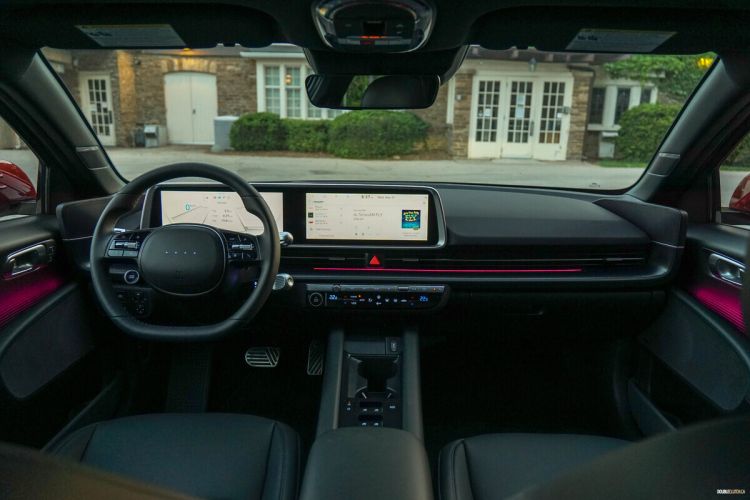
You will have to get used to two things. First, the window controls placed near the centre console. I was not a fan at first, but with my right hand operating the infotainment screen and climate controls, the windows being so close made more sense. Second, you’ll have to get used to plugging in your phone to use Apple CarPlay and Android Auto. The lack of wireless connectivity does miss the mark in making the Ioniq 6 feel truly modern and up-to-date within the industry.
The Ioniq 6 comes in two flavours in Canada. The base Preferred Long Range model comes with power sent to the rear wheels. With the electric motor putting out 168 kW, it provides 225 horsepower and 258 pound-feet of torque. Our test car is the Preferred Long Range AWD, rated at 320 hp and 446 lb.-ft. of torque through its 239kW motor.

Hyundai remains one of the leaders with its regenerative braking system. Adjusting how much or how little you would like is as easy as clicking the paddle shifters on the steering wheel. It does not get any more simple than that. How other automakers struggle with making this feature so simple is a mystery.
As with any EV, the instantaneous torque makes the Ioniq 6 feel much faster than it truly is. Again, it’s not a sports sedan, even with the more powerful electric motor. Expect a zero-to-100 km/h run in a respectable 5.1 seconds, but 7.4 for the smaller RWD motor. Hardly earth shattering, but more than enough for your daily commute. Power is linear and more than enough to pass other vehicles with very little effort.

With the Ioniq 6 being a sedan, the lower centre of gravity lends to a more planted feel compared to the taller 5. The handling prowess is readily apparent, making the 6 the enthusiast’s choice between the two — at least until the Ioniq 5 N comes around. The body structure is rigid enough that the 6 has a composed ride and the interior is super quiet. Wind noise is almost non-existent.
Fully charged, the long range, all-wheel-drive Ioniq 6 is rated at 435 kilometers in optimal conditions. Opting for the less powerful rear-wheel-drive version is good for an estimated 581 kilometers of range. Add the 800V ultra-fast charging system used in all of Hyundai, Genesis, and Kia’s EVs using the E-GMP platform, and you have one of the fastest charging capabilities currently available. Use a 350kW DC charger to get your Ioniq 6 battery going from 10 to 80 per cent in as little as 18 minutes. During my week several cross-town highway commutes, I required one charging session that lasted six hours using a Level 2 charger.
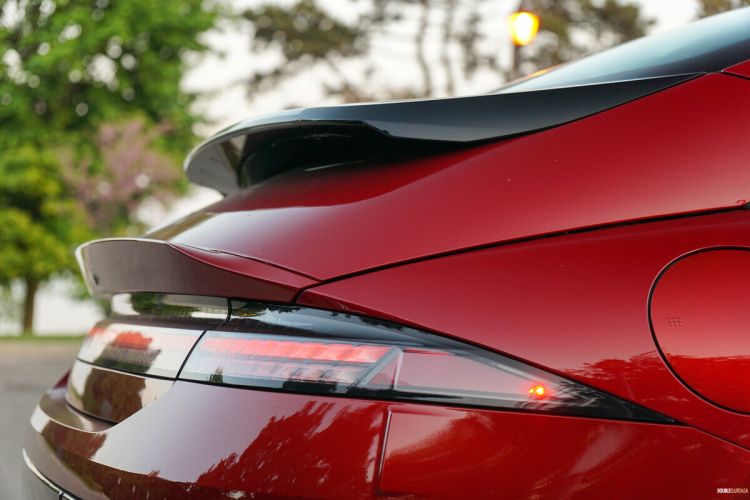
Pricing for the Ioniq 6 starts at $54,999 for the base, long range, rear-wheel-drive model with no options available. Our all-wheel-drive Preferred tester commands a starting price of $57,999, but with $6,000 for the Ultimate package which included a massive list of features such as 20-inch wheels, a heads-up display, various safety features, and much more, it clocked in at $63,999 as-tested. This does not include any rebates provided by the federal or provincial governments.
With the Ioniq 5 and 6, Hyundai has provided two of the most hyped-up EVs in the last several years. The 2023 Hyundai Ioniq 6 may not have been the follow-up people were expecting, but its technology, efficiency, and out-of-the-box thinking is refreshing. Personally, while I prefer the Ioniq 6’s driving capabilities and range, beauty is in the eye of the of the beholder; I would choose the Ioniq 5 as its retro styling hits all the right notes.


